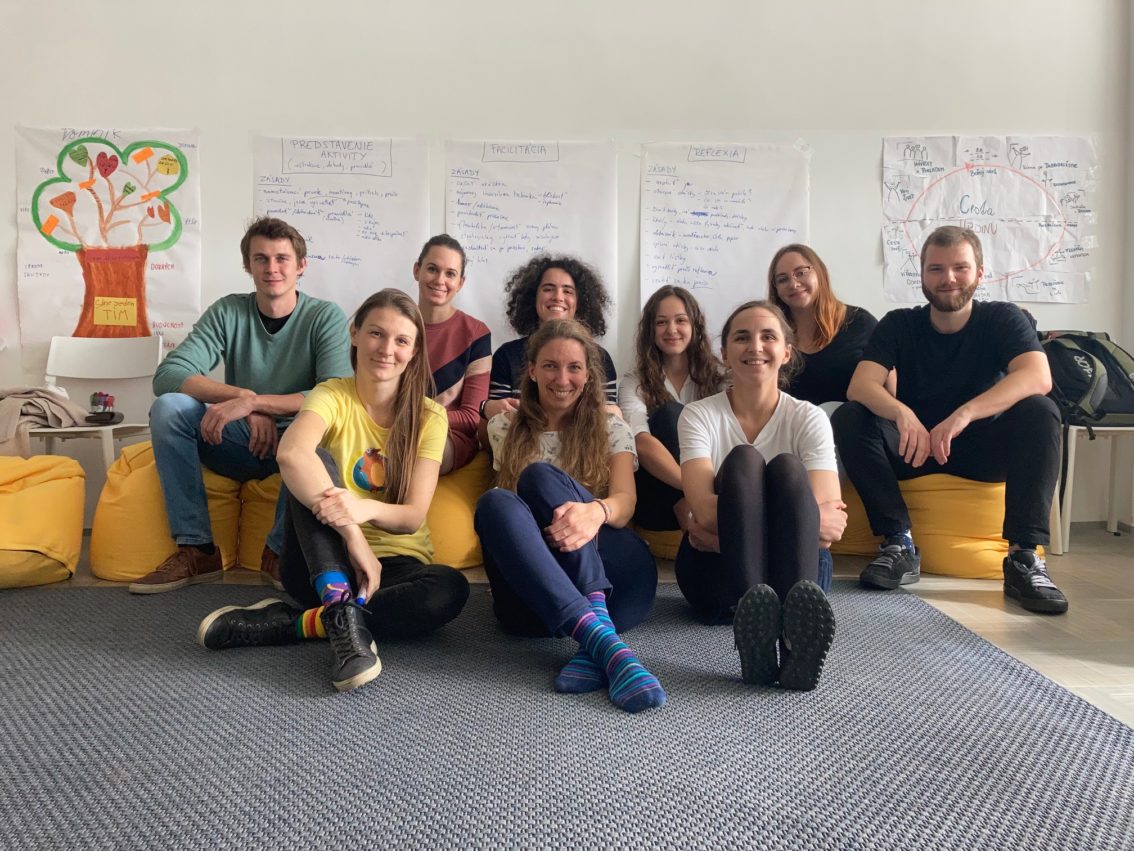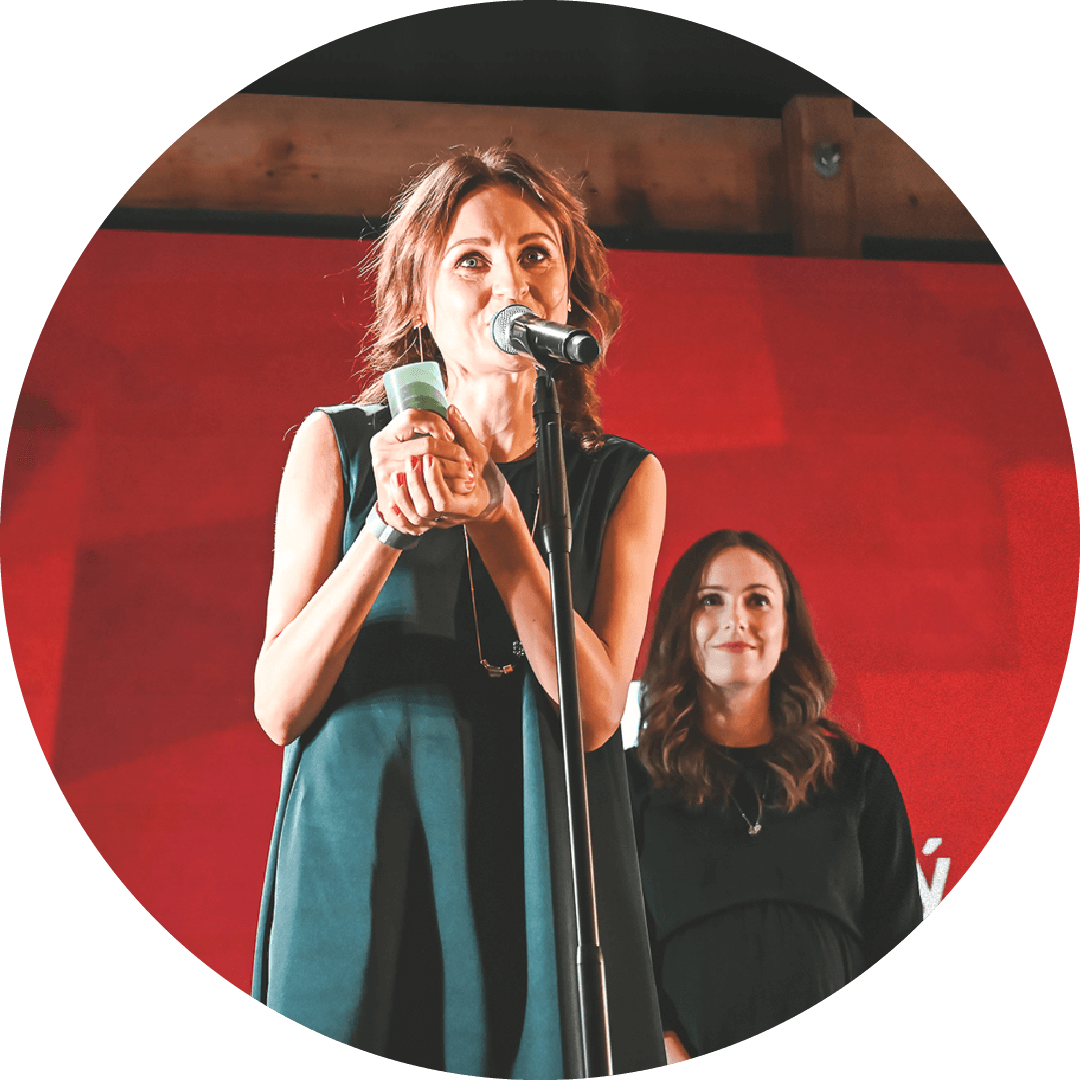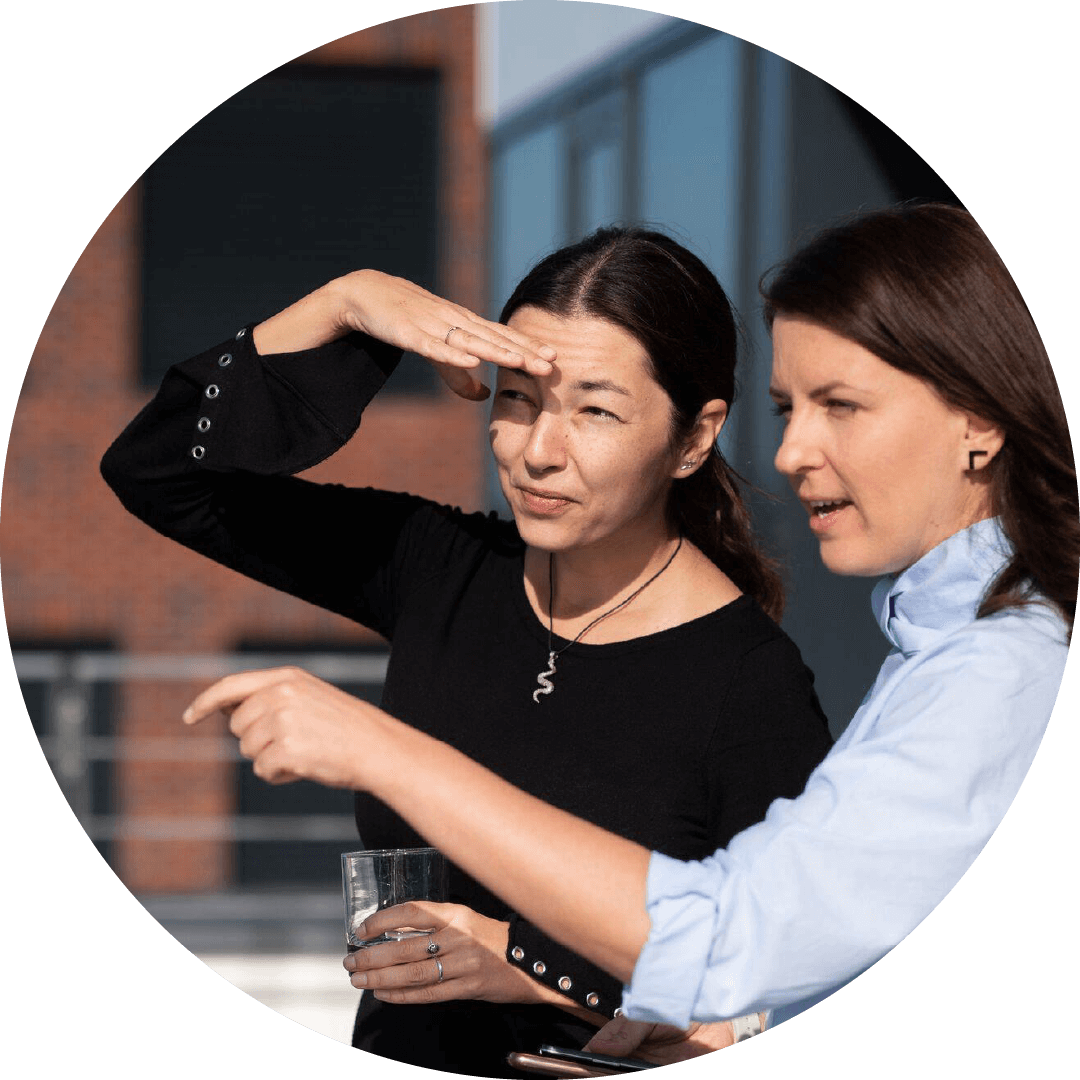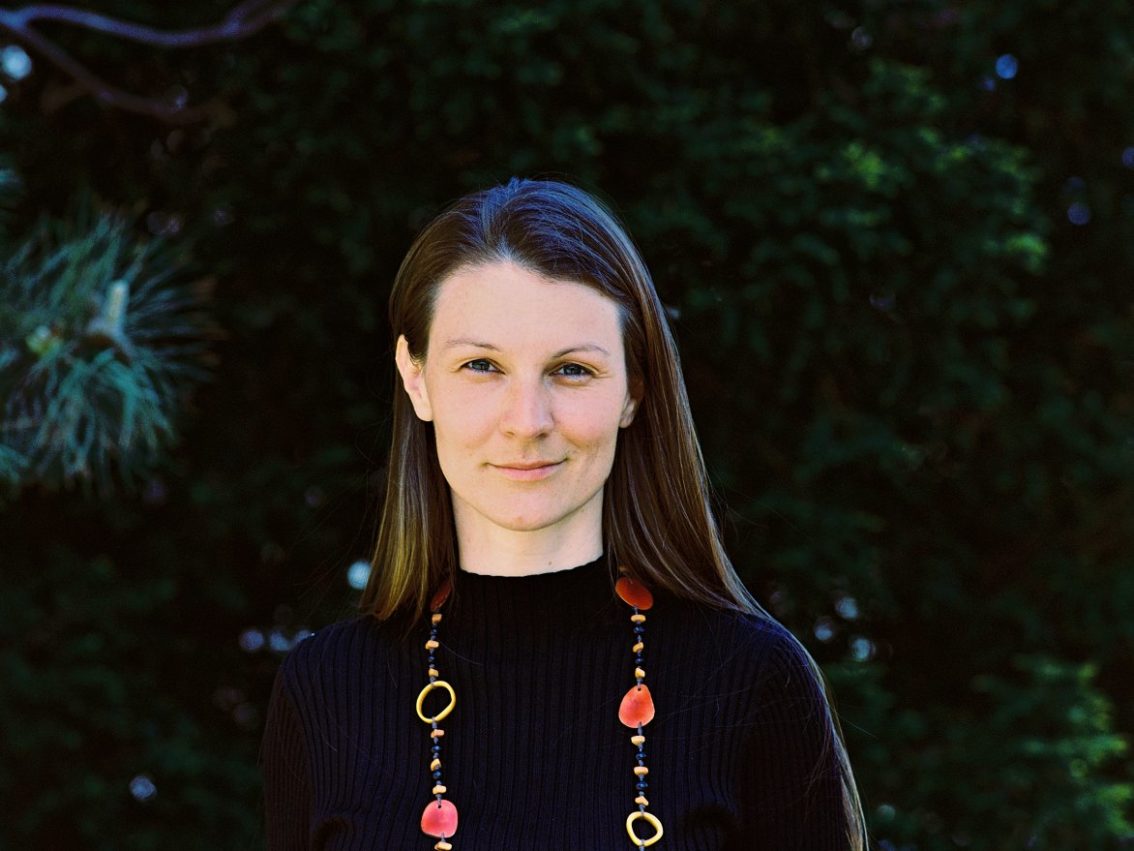We can best develop the skills of the future in diverse groups, an education expert says
Anna Symington-Maar considers the teaching period to be the most difficult but, at the same time, the most beautiful part of her working life. She has been involved in inclusive education for more than ten years, teaching children from socially disadvantaged backgrounds in London, Nepal, and Thailand. Later she co-founded the leadership programme Teach for Slovakia. Now she runs a kindergarten that is open to all children. She says we cannot close our eyes to diversity in society. It is our biggest asset.
In the interview, you will learn:
- why inclusive education is needed;
- how to communicate respectfully with children;
- what techniques a teacher can use in the classroom to create a safe atmosphere;
- how to teach a great class.
Let us start with a direct question – do we educate inclusively in Slovakia?
Slovakia has one of the most segregated societies in economically developed countries. Our schools are in the 62nd place of 63 OECD countries in terms of socio-economic segregation. It means that children from less economically prosperous backgrounds and wealthy children have very little chance of attending the same schools.
In regular schools, you only rarely see children with disabilities or children with special needs. In Slovakia, we send them to special schools, special classrooms. If they are integrated into the regular classroom, they are constantly excluded from the collective. This is a problem for all children, not just those who are disadvantaged.
Inclusive education is for everyone. We do not select children in an inclusive kindergarten. It is available to them regardless of their health disadvantage, talent, social status or family’s financial background. The principle is that all children can learn, grow and develop. In such groups, learning is best for all children.
Inclusive education is about diversity. Why is it needed in society?
There is diversity in society, and we cannot close our eyes before that. Research shows that the skills of the future, such as critical thinking or creativity and communication, are best developed in diverse groups or classes in schools.
Everyone who leads people knows that diversity brings enermous efficiency and added value to teams. People have different backgrounds, ideas, experiences, different perspectives that can be very rewarding.
Another dimension of inclusive education is that children who go through it are more likely to find a job in adulthood. They do not need to be in care in different facilities or be dependent on their relatives. Inclusion leads to independence and expands social contacts. If we invest in it, we invest in the future of us all.
You used to work as a teacher. What did you learn from it?
My teaching time remains the most difficult but, at the same time, the most beautiful period of my working life. For three years, I taught twelve to eighteen-year-olds and young people in one of the poorest neighbourhoods in London. This intense time taught me not to be a perfectionist when working with people. I understood that I could not teach a perfect class or plan something flawlessly. My intention to educate was tested by twenty other human beings, each with their own needs, which were constantly changing.
This experience has also shown me that learning is about accompaniment. The classic notions of “chalk and talk“ do not work in practice. We don’t teach the curriculum. We teach the children. If a person wants to improve in teaching and really cares about helping children develop as best they can, they should go through this cycle every day – try, reflect, get feedback. Reflection is very important. Every single class, every experience with children is different, and if I had not thought about what I was doing, if I had not given myself feedback, I wouldn’t have learnt anything, I wouldn’t move forward.
I started applying this cycle outside of work and my view of the world has radically changed.

Anna Symington-Maar (bottom left) during the training of coordinators and mentors of the Open Future programme. Source: Open Future archive
You pass on lessons learnt during your many years of experience through lecturing. In the Open Future programme, for example, you teach mentors a respectful approach. What is it built upon?
In the classroom, where there are teachers, pupils and students, mutual respect is essential. Our opinions and views are equally important. We perceive everyone as a human being who deserves to be respected for their approach, needs, and emotional spectre.
How to communicate with children following the respectful approach?
A partnership approach without penalties, threats, and ridicule is important. An approach based on agreements and boundaries, which we all try to respect. As a teacher or youth worker, I try to make sure that the needs of everyone in the class are respected. For example, if someone in the class interrupts, I deal with the situation, as it can be disruptive for others. However, I understand that there is a reason behind this behaviour. It is up to me to try to find out where it originates and then help the student behave differently.
A respectful approach teaches that a child’s aggression has nothing to do with me. I do not take it personally. It is a manifestation of the discomfort of a child who needs my help. Therefore, I should work on my own approach, not take it personally, perceive the needs of children, but also my own. In the beginning, it may be more difficult to operate in this way than just setting rewards and penalties. In the longer term, however, a respectful approach brings benefits to all parties involved.
When working with children, mentors need to know the principles of group facilitation. What does it mean, and how does it work in practice?
Individual work with a student is completely different from working with a group of fifteen or twenty-five people. Dynamics, relationships, interactions play an important role here. When many people are together, there are different challenges but also opportunities.
Facilitation means trying to help the group dynamics and functions. Specifically, I focus on giving clear instructions to others, as unclear instructions are most often the reason behind ineffective group work. For example, during training, I tell mentors to describe to me how to spread butter and jam on a slice of bread. They often find that they have forgotten to tell me to unpack the butter, pull out a knife or slice the loaf of bread first. Subsequently, we learn to give instructions and guidelines as accurately as possible. The technique that helps to instruct more clearly is to take on the role of a sports commentator for a while. Then I describe what is happening in the group. I comment on who follows the instructions – Janko has already chosen a book, Katka has already chosen a book, Miška has also joined us.
How do the children benefit from this teaching technique?
By commenting, I highlight the positive behaviour and give others a chance to get involved. I could also do the opposite, focusing on someone who doesn’t follow the instruction. We often encounter this in practice. We focus too much on things and situations that don’t work. We tell children what we don’t want them to do “don’t run”, “don’t scream”. However, when we tell them what to do, “walk slower”, “talk quieter”, the effect is much better. Group facilitation is about what kind of a climate I am able, consciously or unconsciously, to create in a class by how I behave.
We have talked about diversity. People who work with children are also diverse. However, is there any feature that should be uniting them? What type of person do you think should teach children or accompany them in their extracurricular activities?
The term diversity captures it well. I think a wide range of people can work with children. Let them be different. Let them make mistakes. Let the children see what mistakes they are making and let the pupils and teachers learn to talk about them together.
The only thing I think excludes someone is if they don’t want to do this work if they don’t like the job. People who work with children should enjoy it. Seeing the meaning behind your important mission. Deciding whether to work with children should be a real choice, not something I do because I have no other choice.
Rozmanita (tr. Diverse) is the title of the civic association you have established. What is its purpose?
The civic association is trying to provide a tangible example of what inclusive kindergartens and primary schools in Slovakia could look like. I felt like there was something missing in our country, although inclusion is often talked about. School is for everyone. All children have the same right to go to school with their peers. And teachers should be able to teach all children. It is obvious in some respects, difficult in others, as many questions arise in the context of inclusive education. One of the questions I encounter often is whether we are ready for inclusive education, whether it is good for children when they have different classmates.
With our kindergarten and a school, that we also plan for later, we want to show that inclusive education works great for everyone. There is nothing to fear.
Author of the cover photo: Dorota Holubová






